| Kether | |
|---|---|
 | |
| Developer(s) | Infogrames |
| Publisher(s) | Philips |
| Platform(s) | CD-i |
| Release | |
| Genre(s) | Space flight simulation, adventure |
| Mode(s) | Single-player |
Kether is a video game developed by Infogrames and published by Philips for the CD-i.
| Kether | |
|---|---|
 | |
| Developer(s) | Infogrames |
| Publisher(s) | Philips |
| Platform(s) | CD-i |
| Release | |
| Genre(s) | Space flight simulation, adventure |
| Mode(s) | Single-player |
Kether is a video game developed by Infogrames and published by Philips for the CD-i.
Kether is a game that mixes elements of both action and graphic adventure. [3]
Kether was developed by French studio Infogrames through its subsidiary International World Productions (IWP). Infogrames sought to provide early support to publisher Philips and its CD-i during the fourth generation of video game consoles due to advances brought on by the system's optical disc technology. [4] [5] [6] Kether was one of seven projects from IWP, which was specifically established to contribute to a second wave of CD-i software for Philips. [7] [8]
Guy Selva, the game's artistic director and one of its writers, desired to create a space opera that would offer the player the opportunity to take advantage of the CD-i's audio and graphical capabilities. Production mirrored that of a feature film with a script written first and foremost and live actors included via full-motion video cutscenes. [9] The 3D computer-generated imagery work was outsourced to Brussels-based Little Big One (LBO), which utilized Silicon Graphics workstations running TDI Explore and Paintbox software. [10] Production was overseen by Infogrames chairman, CEO, and general director Bruno Bonnell. He mentioned that CD-i games during this period would require an estimated three million franc budget with a minimum of seven people working for 15 months. At this cost, at least 50,000 units would have to be sold to make a profit. [4]
First announced in mid-1992 as The Mystery of Kether (Le Mystère de Kether), it was initially scheduled to launch that September. [5] [11] However, it was delayed. By mid-1993, the game had been in development for over two years. [4] Philips finally released it in Europe that October. [1] A television special titled La Nuit des Jeux Vidéo (Video Game Night) aired on channel France 3 on November 26, 1993 and was a collaboration between Philips Media France, Tilt , and Consoles + . As part of the special, individuals competed against one another playing Kether in order to win a copy of the game and a Philips CD-i model 210. [12] [13] Kether was released in North America in January 1994. [2] The game eventually came bundled with the Maganvox CD-i model 200 in the region. [14]
| Publication | Score |
|---|---|
| Computer and Video Games | 84% [15] |
| Edge | 6/10 [16] |
| Electronic Gaming Monthly | 23/40 [17] |
| GamePro | 3.3/5 [18] |
| Joystick | 95% [19] |
| Next Generation | |
| Tilt | 79% [20] |
| CD Magazine (IT) | |
| CD-i Magazine (UK) | 95% [22] |
| Génération 4 | 90% [23] |
| Power Unlimited | 92% [24] |
| VideoGames | 8/10 [25] |
Kether received mostly positive reviews. Next Generation reviewed the game, rating it three stars out of five, and stated that "Challenging puzzles and a mystical atmosphere round out the title into a CD-i adventure that's a cut above many of its peers. [3] Power Unlimited have a score of 92% summarizing: "If Philips had made more games of Kether's caliber, their CD-I might have become a serious gaming system. The game offers many (easy) puzzles, bundled with the most beautiful 16-bit graphics and sounds." [24]

The Compact Disc-Interactive is a digital optical disc data storage format as well as a hardware platform, co-developed and marketed by Dutch company Philips and Japanese company Sony. It was created as an extension of CDDA and CD-ROM and specified in the Green Book specifications, co-developed by Philips and Sony, to combine audio, text and graphics. The two companies initially expected to impact the education/training, point of sale, and home entertainment industries, but the CD-i is largely remembered today for its video games.

The Watara Supervision, also known as the QuickShot Supervision in the UK, is a monochrome handheld game console, originating from Asia, and introduced in 1992 as a cut-price competitor for Nintendo's Game Boy. It came packaged with a game called Crystball, which is similar to Breakout. One unique feature of the Supervision was that it could be linked up to a television via an official accessory. Games played in this way would display in four colors, much like Nintendo's Super Game Boy add-on for the SNES. A full color TV link was also in the works, but because of the Supervision's failure to make a major impression among gamers it was cancelled, along with the games which were in development for it.
Ocean Software Ltd was a British software development company that became one of the biggest European video game developers and publishers of the 1980s and 1990s.

Monster Business is a 1991 vertically scrolling platform game developed by Eclipse Software Design and published by Ascon that was released for the Amiga and Atari ST.

Alone in the Dark is a 1992 survival horror video game designed by Frédérick Raynal. Developed and published by Infogrames in 1992 for MS-DOS, the game was eventually ported to Mac OS, the PC-98, the FM Towns, the 3DO, the Acorn Archimedes, and iOS. Alone in the Dark is set in 1920s Louisiana and challenges the player to escape a haunted mansion. To advance, the player must solve puzzles while banishing, slaying, or eluding various ghosts and monsters. The player can collect and use weapons, manage a weight-based inventory system, and explore a partially nonlinear map.
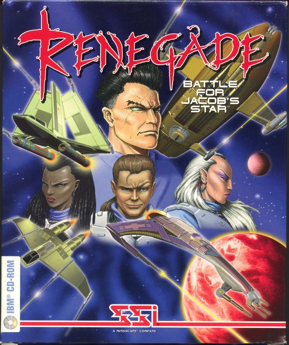
Renegade: The Battle for Jacob's Star is a space flight simulator video game developed by Midnight Software and published by SSI for the personal computer.
In the 1990s, Philips Interactive Media published three action-adventure games based on Nintendo's Legend of Zelda franchise for its Compact Disc-Interactive (CD-i) players. The first two, Link: The Faces of Evil and Zelda: The Wand of Gamelon, were developed by Animation Magic and released simultaneously on October 10, 1993, and Zelda's Adventure was developed by Viridis and released on May 10, 1996. The two latter entries are the first to feature Princess Zelda as the protagonist instead of Link. Faces of Evil and Wand of Gamelon use the side-scrolling view introduced in Zelda II: The Adventure of Link (1987), while Zelda's Adventure has a top-down view reminiscent of the original 1986 game. All three are non-canon to the Zelda franchise.

Advanced Dungeons & Dragons: Slayer is a fantasy first-person, dungeon crawl / action role-playing game based on the second edition of Advanced Dungeons & Dragons. The game was developed by Lion Entertainment and published by Strategic Simulations in 1994 for the 3DO Interactive Multiplayer. A Japanese version titled Lost Dungeon (ロストダンジョン) was published by T&E Soft the following year.

The Chessmaster 4000 Turbo is a 1993 chess video game developed and published by The Software Toolworks. It is part of the Chessmaster series. An enhanced CD-ROM version was released in 1994.

Front Lines is a 1994 turn-based strategy computer wargame for MS-DOS developed and published by Impressions Games.

Nosferatu the Vampyre is an action game based on the film of the same name and runs on the Amstrad CPC, Commodore 64 and ZX Spectrum computers. It was developed by Design Design and published by Piranha Software in 1986.
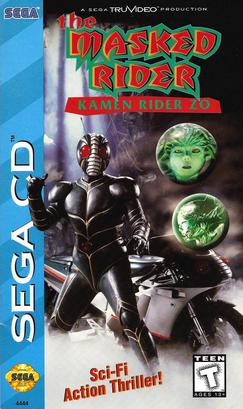
The Masked Rider: Kamen Rider ZO is a video game developed by Telenet Japan and published by Toei Video in Japan and Sega in North America for the Sega CD.
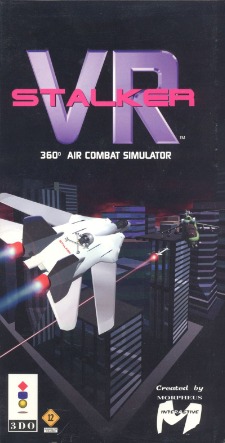
VR Stalker is a combat flight simulator video game developed by Morpheus Interactive and originally published by American Laser Games for the 3DO.

Alien Gate is a fixed shooter developed by SPC Vision and published by Philips for the CD-i.

Zephyr is a racing/ first-person shooter video game developed and published by New World Computing for DOS.
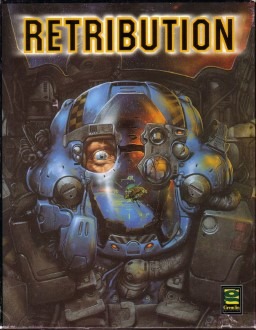
Retribution is a video game developed by British studio Astros Productions and published by Gremlin Interactive for DOS.

Virtuoso is a third-person shooter video game developed by MotiveTime and originally published by Nova Spring and Elite Systems in North America and Europe, respectively, for DOS in 1994 and then 3DO in 1995.

Joystick was a French computer magazine that published monthly issues on PC games. It was founded in 1988 by Marc Andersen, who later left in November 1995. Originally published in the form of a 32-page weekly magazine in 1988 and 1989, it saw monthly 148-page issues past 1990. It initially sold with one or more floppy disks and then later with several CD-ROMs, and finally, until April 2012, a DVD that included complete copies of video games. In 2012, Joystick ceased distribution.
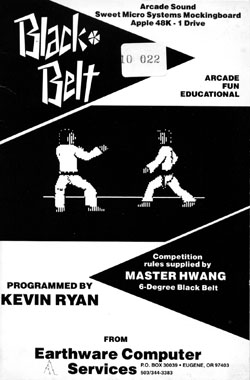
Black Belt is a fighting game published in 1984 by Earthware Computer Services for the Apple II and Commodore 64. It was released as an educational video game supplement to real life taekwondo training. The player spars with another human or computer opponent while strictly adhering to the rules of the sport including scoring and penalties. Black Belt is the fourth game from Earthware and the second programmed by Kevin Ryan for the company.